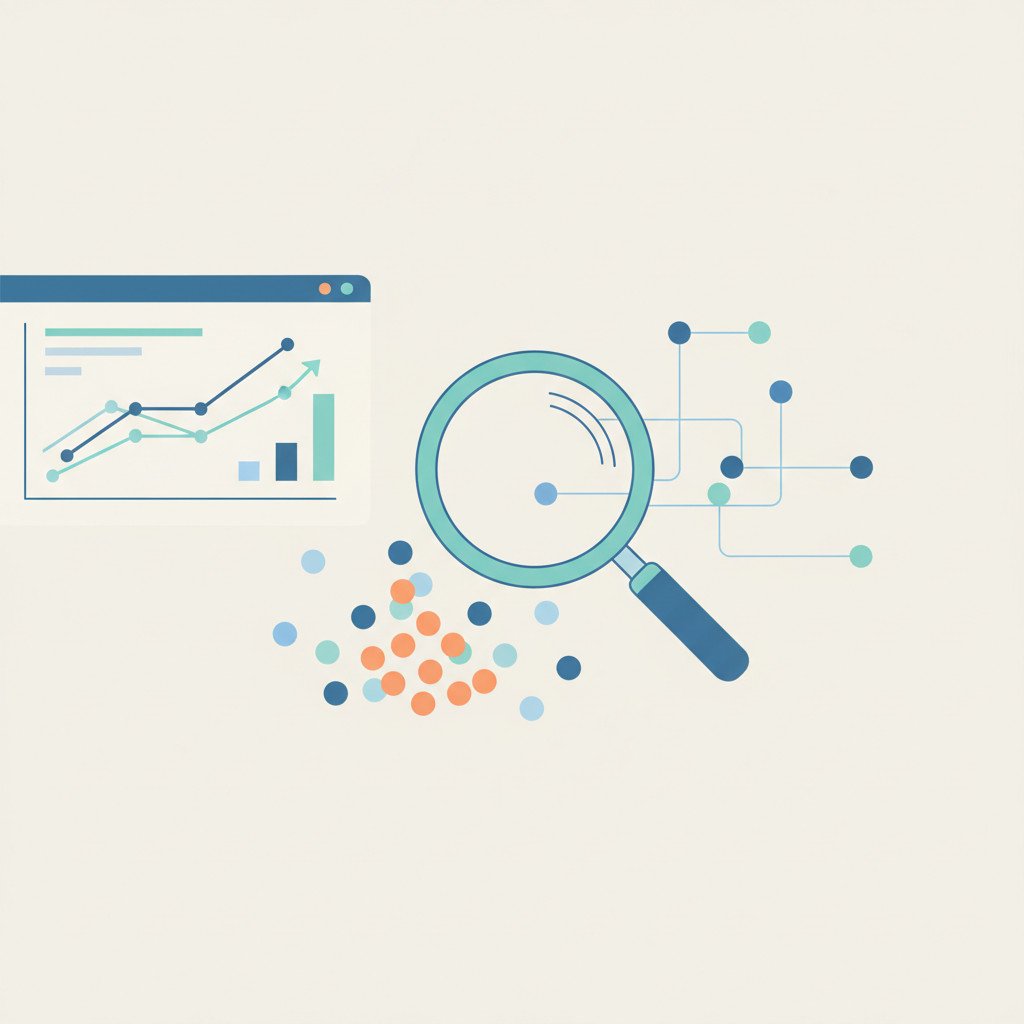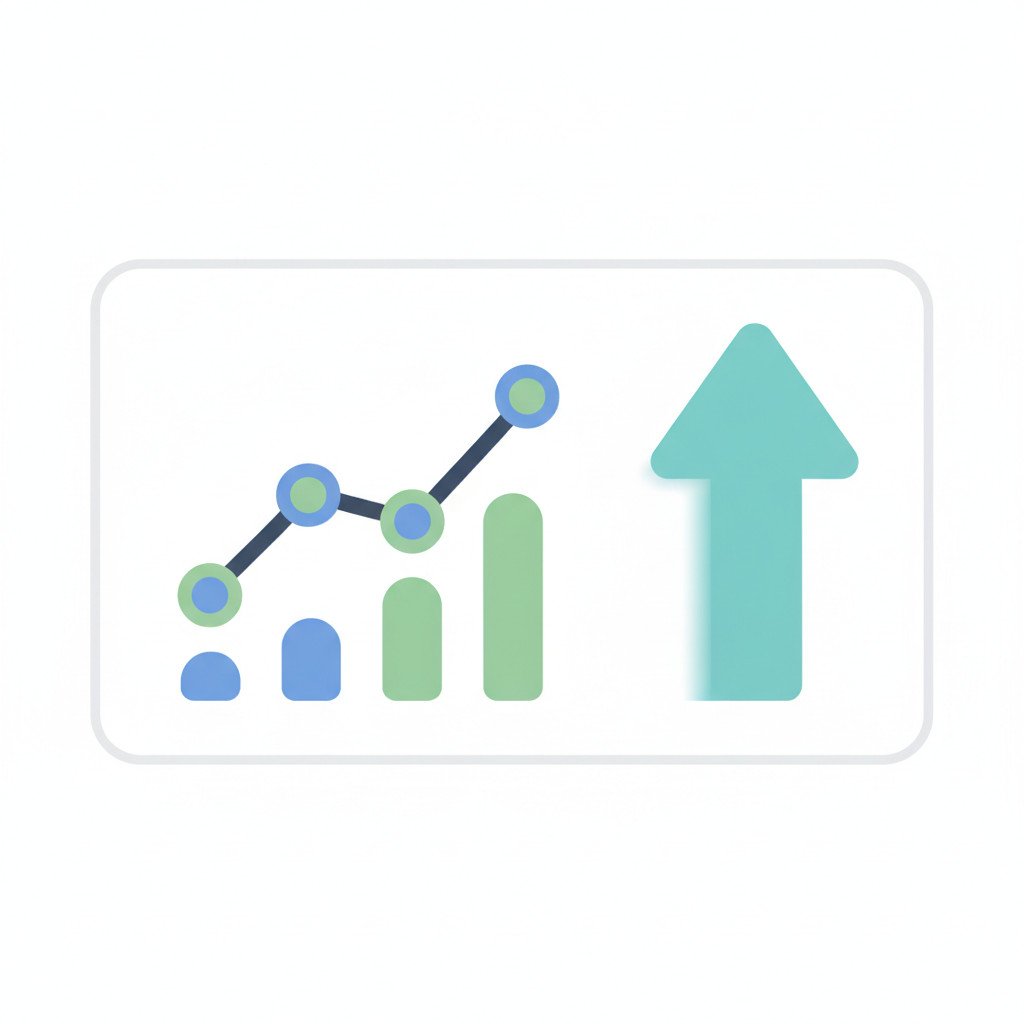Unlocking Business Success with Vibe Analytics
Vibe analytics puts clear, actionable insight at the heart of your business. In a world flooded with numbers, vibe analytics helps teams find meaning fast. Because decisions hinge on timely data, this approach turns raw telemetry into practical next steps.
Modern companies need analytics that work in real time. Therefore this article shows how small and medium businesses use real-time data, natural language queries, and intuitive KPI dashboards. You will learn practical workflows that drive product and operational improvements. Moreover the piece highlights tools and guardrails that keep analysis transparent and safe.
Expect examples from IoT deployments and SaaS use cases. For instance we explore how Lumo applied vibe analysis to manage device fleets. We explain how Smartbooks and the Fabi platform speed up dashboard creation, and how scheduled reports and Slack alerts push insights to busy teams. As a result you will see how to move from confusing spreadsheets to clear, shareable reports.
Finally we cover limitations and verification best practices. However analytics only helps when people trust the output. Therefore we offer simple checks and sample workflows to validate results before you act. Read on to unlock clearer decisions, faster experiments, and measurable growth with vibe analytics.
Vibe analytics Defined
Vibe analytics is a practical approach to turning raw data into timely business actions. It blends automated analysis, natural language queries, and real-time dashboards. Because teams need clarity fast, vibe analytics focuses on speed and relevance. It reduces the friction between insight generation and decision making.
Vibe analytics uses structured pipelines and semantically aware models. Therefore it connects to CRM, martech, e-commerce, and IoT data sources. Moreover it emphasizes transparent workflows and guardrails. As a result, teams can trust outputs while scaling analysis across the company.
Core features of Vibe analytics
- Real-time data streaming
- Ingests telemetry and operational feeds continuously. This enables up-to-the-minute KPIs and alerts.
- Natural-language queries and Q&A
- Lets nontechnical users ask questions in plain English. Consequently teams get fast, readable answers without SQL.
- Automated correlation and cohort analysis
- Finds relationships and segment patterns automatically. This speeds investigation and hypothesis testing.
- Intuitive KPI dashboards and Smartbooks
- Produces shareable dashboards and scheduled reports. Teams receive visuals, summaries, and raw breakdowns together.
- Transparent code and editable recipes
- Shows generated code when needed, or hides it for simplicity. Therefore developers and semitechnical users can inspect logic.
- Built-in guardrails and controlled access
- Limits analysis to authorised data sources. As a result, governance and compliance stay intact.
Unique value proposition and relevance
- Faster time-to-insight
- Cuts weeks of engineering work into hours. For example, Lumo built dashboards from vibe analysis instead of long integration projects.
- Democratized analytics
- Empowers semitechnical users to run experiments and answer questions. This reduces backlog for technical teams.
- Actionable outputs
- Delivers pushable insights to Slack, email, or Google Sheets. Therefore teams act on findings quickly.
- Safer AI adoption
- Balances automation with transparency and verification. However organisations should test workflows on sample data first.
For more context on automation and tooling in modern workflows, see this article on developer automation and this piece on AI subscription economics.

Vibe analytics: Improved decision making
Vibe analytics speeds decisions by turning complex data into clear recommendations. Because teams get context, they make choices with greater confidence. For example, product managers can see which feature cohorts drive retention. As a result they prioritise work that moves key metrics.
- Faster, evidence-based decisions
- Vibe analytics surfaces the most important signals first. Therefore leaders avoid guesswork and act on signals that matter.
- Reduced analysis backlog
- Nontechnical users explore data with natural-language queries. Consequently data teams get fewer urgent tickets.
- Clear experiment readouts
- Vibe analytics summarises A/B tests and suggests next steps. For instance marketing can stop underperforming campaigns sooner.
Vibe analytics: Real-time insights and customer engagement
Real-time data matters for customer experience. Vibe analytics streams telemetry and behavioural data together. Thus support teams fix issues before customers escalate.
- Real-time KPI monitoring
- Dashboards update continuously, so teams catch trends early. For example, an IoT fleet operator sees device drift and triggers maintenance.
- Personalised engagement at scale
- Teams use cohort analysis to tailor offers and messages. As a result conversion and retention both improve.
- Actionable alerting and workflows
- Insights push to Slack, email, or Google Sheets. Therefore busy teams see findings where they work.
Business outcomes and tangible scenarios
- Lower operational costs
- Automated correlation analysis finds waste and inefficiency. For example, Lumo reduced downtime by tuning fleet behaviour.
- Faster product iteration
- Product teams test hypotheses and get readable summaries. Consequently they go from idea to measurable result faster.
- Better cross-team alignment
- Shareable Smartbooks and scheduled reports create a single source of truth. Therefore sales, support, and engineering act on the same data.
Why Vibe analytics matters for SMBs
- Lowers engineering overhead by automating dashboards and reports. This helps small teams move quickly.
- Makes sophisticated analysis accessible to semitechnical users. As a result growth teams experiment more often.
- Supports safer AI use with guardrails and transparent code options. However organisations should test workflows on sample data first.
Learn more about how automation reshapes workflows in other tools and developer stories, such as this take on developer automation and this analysis of AI subscription costs. Also explore vendor solutions like Fabi for practical implementations.
Vibe analytics comparison table
| Criteria | Vibe analytics | Google Analytics | Mixpanel | Tableau |
|---|---|---|---|---|
| Core features | Real-time dashboards, natural-language Q&A, automated correlation, Smartbooks, editable code | Web and app traffic tracking, funnels, behavioural reports | Advanced event-based tracking, retention and cohort analysis | Rich visual analytics, drag-and-drop dashboards, deep BI features |
| Ease of use | Designed for semitechnical users; NL queries reduce SQL needs | Easy for marketers; setup needed for advanced tracking | Friendly for product teams; event design required | Steeper learning curve; requires analyst support |
| Pricing | Usage-based with SME tiers; reduces engineering overhead | Free tier; paid GA4 360 for enterprise | Tiered pricing; can grow costly with events | License or subscription; enterprise pricing varies |
| Integration capabilities | Connects CRM, martech, e-commerce, IoT; secure guarded sources | Strong web ecosystem integrations | SDKs for mobile and web; good API support | Wide connector library to databases and warehouses |
| Real-time support | Strong real-time streaming and alerting | Near real-time for some metrics | Near real-time events | Limited real-time; best for deep analysis |
| Transparency and guardrails | Built-in guardrails and inspectable code | Standard privacy settings; less explainability | Focus on events; limited model transparency | Full control over queries; requires governance |
| Best for | SMBs and teams that need fast, actionable insights | Marketing attribution and web analytics | Product teams tracking user behaviour | Analysts needing visual BI and deep exploration |
The table gives a quick snapshot to guide choices. For practical case studies and tooling context, read this article on developer automation and this piece on AI subscription economics. Also review Google Analytics documentation for platform details.
Real-world applications and case studies of Vibe analytics
Vibe analytics shines when theory meets messy, real data. Across industries, organisations use vibe analysis to cut analysis time and surface actionable signals. Because the method blends streaming telemetry, natural-language queries, and guarded automation, teams move from question to answer faster.
IoT and fleet management: Lumo
Lumo used the Fabi platform to manage large IoT fleets. Instead of months of engineering, Lumo built operational dashboards from vibe analysis. As a result support and operations teams spotted device drift sooner and tuned behaviour faster. Moreover insights pushed to Slack and scheduled reports reduced manual triage. For context on vendor tooling and automation, see this article on developer automation: Transform Your Coding Experience: Discover GitHub Spark and the Future of Developer Automation!
SaaS product optimisation: faster experiments
A midsize SaaS team replaced slow analytics backlogs with natural-language queries. Therefore product managers ran cohort exploration and A/B readouts without waiting weeks. Consequently the team shortened experiment cycles and shipped higher-confidence features. Because the system surfaces correlations automatically, engineers refocused on product work not dashboards.
E-commerce and personalised marketing
Retail teams use vibe analytics for cohort targeting and churn prevention. For example, marketing mixes cohort analysis with real-time web events. As a result teams trigger personalised offers based on behaviour within hours, not days. Therefore customer engagement improves while ad spend becomes more efficient.
Healthcare operations and anomaly detection
Hospitals and clinics use vibe analysis to monitor equipment telemetry and supply flows. Consequently operations teams receive alerts when patterns deviate from normal. This early warning reduces service interruptions and improves resource allocation.
Practical outcomes and verification
Across these cases, common outcomes include faster time-to-insight and lower engineering overhead. Fabi’s early traction lends credibility; the company secured backing from Eniac Ventures in 2023. However organisations should test workflows on sample data first. Because automated analysis can be powerful, teams must verify outputs before large-scale action. For discussion on AI economics and verification trade-offs, see this piece: Why Do AI Chatbot Subscriptions Cost Over $200? The Surprising Truth.
These mini case studies show how Vibe analytics turns noisy data into repeatable decisions. Therefore small and medium teams can scale insights without heavy engineering overhead.

Vibe analytics and AI integration
Vibe analytics will grow tighter ties with advanced AI. Therefore systems will move from descriptive summaries to proactive guidance. Moreover AI models will help translate complex correlations into plain recommendations. As a result teams will see suggested experiments and next steps alongside dashboards.
Vibe analytics: predictive analytics and enhanced automation
Predictive models will let teams act before issues appear. Because models forecast churn, demand, and device failures, organisations will plan ahead. Consequently operations will shift from reactive fixes to preventive work. Additionally automation will increase. For example, scheduled maintenance triggers will run automatically when forecasts cross risk thresholds.
Key emerging capabilities
- Auto-generated playbooks
- Systems will pair insights with step-by-step actions. Therefore nontechnical teams can follow repeatable fixes.
- Model-driven prioritisation
- Insights will include confidence scores and impact estimates. As a result leaders can prioritise high-value work.
- Cross-source synthesis
- Vibe analytics will merge IoT, CRM, and marketing data more smoothly. Thus teams get fuller context for decisions.
Vibe analytics and business strategy
As adoption grows, analytics will shape strategy more directly. Companies will use predictive signals to set product roadmaps and budgets. Moreover small teams will outsprint larger rivals by acting faster. For instance a retailer could reallocate ad spend within hours, not weeks.
Vibe analytics: ethics, governance, and verification
Stronger automation increases governance needs. However built-in guardrails and transparent recipes will reduce blind trust. Organisations should test workflows on sample data frequently. Consequently verification becomes a routine step, not an afterthought.
Looking ahead
Vibe analytics promises faster, smarter decisions for SMBs and enterprises. Therefore teams that pair automation with verification will win. As adoption matures, expect clearer playbooks, tighter AI checks, and broader access to predictive insights.
Conclusion: Vibe analytics and the EMP0 advantage
Vibe analytics turns noisy data into clear business action. Throughout this article we covered core features, benefits, real-world cases, and emerging trends. As a result, leaders can move from reactive reporting to proactive growth.
EMP0 is a US-based company focused on AI and automation solutions for sales and marketing. The company provides ready-made tools and proprietary AI capabilities that speed adoption. For example, EMP0 offers prebuilt sales sequences, automated lead scoring, and campaign templates. In addition, EMP0 supplies brand-trained AI workers and custom workflows that fit under client infrastructure.
Why EMP0 matters
- Full-stack implementation
- EMP0 builds AI-powered growth systems end to end. Therefore clients avoid piecemeal integrations.
- Brand-trained AI worker
- The system learns your voice and rules. As a result workflows scale while staying on-brand.
- Sales and marketing focus
- Tools target revenue motion with automation for outreach, nurturing, and conversion.
EMP0 acts as a partner for teams that want measurable outcomes. Because EMP0 runs under client infrastructure, organisations retain control and governance. Moreover EMP0 balances automation with transparent, verifiable processes.
Take the next step
Explore EMP0 for practical AI and automation that drive revenue. Visit the EMP0 website and blog for demos and case studies. Stay in touch with the team via their n8n creator page.

